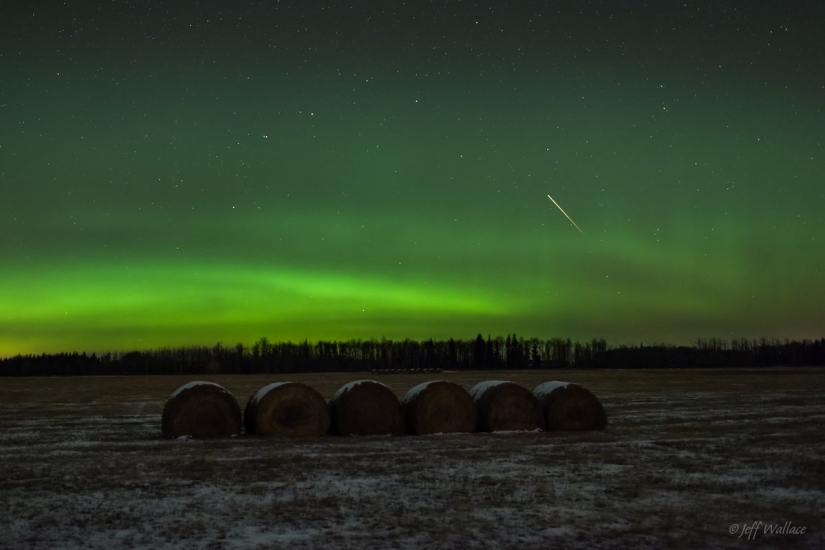The Stargazes that you can't possibly miss this year
Categories: Space
By Pictolic https://pictolic.com/article/the-stargazes-that-you-cant-possibly-miss-this-year.htmlWe also call them shooting stars, a stellar or meteor shower and a meteor shower.
But in fact, a starfall is still a meteor shower, and meteors are not stars at all. In fact, this is space debris — small particles of dust and ice left over from comets that move too close to the Sun. When our planet passes through this debris, the particles enter the atmosphere, where they interact with air molecules and burn up. And that's what we can see in the sky.
(13 photos in total)
 Source: Business Insider
Source: Business Insider

Quadrantids
The quadrantids are usually active in January. Usually you can see about 25 meteors flying through the night sky every hour. The radiant, or region of the celestial sphere, which seems to be the source of the Quadrantids, is located at the northern tip of the constellation of Volopas, next to the Big Dipper. This meteor shower is best seen from the Northern Hemisphere.

Lyrids
Lyrids are active in April. During the peak of the flow, approximately 10 to 15 meteors can be observed in the night sky every hour. But sometimes there are rare bursts — up to 100 meteors per hour. The radiant of Lyrid is the star Vega in the constellation Lyra. Lyrids are best seen from the Northern Hemisphere.

This one is Aquariums
The n-Aquariids are active from April to May. Depending on the location, you can see from 10 to 60 meteors every hour. The radiant of this stream is this star in the constellation Aquarius. Eta Aquariids are best seen from the Southern Hemisphere.

Delta Aquariums
Delta Aquariids are active from July to August. From 15 to 20 meteors can be observed in the night sky every hour. The radiant is the star Scat — Delta of the constellation Aquarius. This meteor shower is best seen from the Southern Hemisphere.

Alpha Capricornids
Alpha Capricornids are active from July to August. This is one of the weakest meteor showers — no more than 5 meteors per hour. But it is well known for its spectacular bright fireballs — the glow of the meteor becomes so bright that it obscures the rest of the sky. The flow is observed in the Northern and Southern hemispheres.

Perseids
The Perseids are also active between July and August. Meteors are released from comet Swift—Tuttle. Usually you can see from 50 to 75 meteors per hour. Their apparent source is the constellation Perseus. These meteors are bright and fast and often leave behind persistent plumes in the sky. They are best seen from the Northern Hemisphere.

Orionids
Orionids are active between October and November. Although it is usually possible to see only 10-20 meteors per hour, for several years the stream competed in activity with the Perseids, releasing from 50 to 75 meteors hourly. This stream is also known for generating persistent footprints and fireballs from time to time. The apparent source of meteors is the constellation Orion.

Draconians
Draconians are active in October. Although the stream is usually quite sparse, releasing only a few meteors per hour, there were times when the Draconians were the source of thousands of meteors every hour. These meteors seem to fly out of the head of the constellation of the Dragon in the northern sky. Because of this, the flow is best seen from the Northern Hemisphere.

Southern Taurids
Southern Taurids are active from September to November. Despite the fact that the stream has been active for more than two months, it rarely produces more than 5-7 meteors per hour, even at its peak. Nevertheless, this flow is the cause of many fireballs. The apparent source of the Southern Taurids is the constellation Taurus.

Northern Taurids
Northern Taurids are active from October to December. The stream is very similar to the Southern Taurids, producing only a modest 7 meteors per hour. Meteors are often quite slow, but can be very bright, sometimes with fireballs. As with the Southern Taurids, the apparent source of the Northern Taurids is the constellation Taurus.

Leonids
Leonids are active in November. They originate from the Tempel—Tuttle comet. Although every few decades the stream creates real meteor storms with thousands of meteors per minute, in most cases only 10-15 meteors can be observed hourly. The radiant of the stream is the constellation Leo.

Geminids
Geminids are active in December and, as a rule, are the strongest meteor shower of the year. Meteors, often white and bright, can fall very often — up to 120 per hour. The radiant of this stream are the stars Castor and Pollux in the constellation Gemini. Geminids are best seen from the Southern Hemisphere.

Ursids
Ursids are active in December. Meteors fly in the sky at a speed of 10-15 pieces per hour, with occasional bursts of up to 25 flashes per hour or more. Meteors originate from Tuttle's comet. The stream can only be seen from the Northern Hemisphere. The radiant is located in the constellation Ursa Minor.
Keywords: Stars | Beautiful | Meteors | Sky
Post News ArticleRecent articles

Although digital photography and photo processing technologies have greatly advanced the boundaries of image manipulation, photo ...

This is very questionable from an ethical point of view, but no less popular event was held annually as part of the fair in ...
Related articles

Many do not like winter. Especially when the main holiday of the New year passed. However, it is undeniable that the winter is a ...

The beauty of women is well judged many years later, when in human memory remain the most vivid images. Even today, these women are ...

Madonna, Johnny Depp, Annie Lorak, Lady Gaga, Olga Buzova, Philip Kirkorov, Leonardo DiCaprio, what unites these stars of domestic ...

Sometimes people commit such monstrous acts that they become an inspiration for horror filmmakers. Thus, the master of the genre ...